
The Cowan Pottery Studio was founded by R. Guy Cowan in Lakewood, Ohio, United States in 1912. Cowan Pottery Studio mainly produced architectural tiles, but also created a line of bowls and vases called "Lakewood Ware." [1]

The Cowan Pottery Studio was founded by R. Guy Cowan in Lakewood, Ohio, United States in 1912. Cowan Pottery Studio mainly produced architectural tiles, but also created a line of bowls and vases called "Lakewood Ware." [1]
R. Guy Cowan first opened Cowan Pottery Studio in Lakewood, Ohio in 1912 and the studio produced architectural tiles and Lakewood Wares. [1] Cowan Pottery produced both artistic and commercial work in a variety of styles. His pottery was influenced by the Arts and Crafts Movement, Art Deco designs, Chinese ceramics, and modern sculpture designs. [2] Shortly after opening the studio, Cowan closed the studio to serve in the army during World War I. Upon returning home after the war in 1920, Cowan decided to move his pottery studio to 19633 Lake Road in Rocky River, Ohio. [1]
Once in Rocky River, the studio shifted its pottery focus towards commercial production. Cowan hired a small staff number of well-known Cleveland School artists and by the mid-1920s a number of established artists came to work in his studio: Elizabeth Anderson, Arthur Eugene Baggs, Alexander Blazys, Paul Bogatay, Edris Eckhardt, Waylande Gregory, A. Drexler Jacobson, Raoul Josset, Paul Manship, José Martin, Herman Matzen, F. Luis Mora, Elmer L. Novotny, Margaret Postgate, Stephen Rebeck, Guy L. Rixford, Viktor Schreckengost, Elsa Vick Shaw, Walter Sinz, Frank N. Wilcox, H. Edward Winter, and Thelma Frazier Winter. [2] Some of Cowan's students were not trained in ceramics prior to starting in his studio and had to be taught how to work with their hands. [1] With the exception of Guy Cowan, himself, Waylande Gregory designed more pieces for the pottery studio than anyone else. Among Cowan's finest pieces were three limited edition figures relating to dance, including "Salome" (1928), "The Nautch Dancer," (1930), and "The Burlesque Dancer," (1930). For the last two, Gregory made sketches from the side of the stage of the well-known Ziegfeld Follies star, Gilda Grey, when she was performing in Cleveland. [2] In the 1920s, Cowan Pottery Studio was successful and popular. R. Guy Cowan even used his national recognition and awards to advertise his pottery. His pottery was sold across the nation and Canada. In 1931, Cowan's business started to feel the financial stress of the Great Depression. Cowan could no longer afford to pay his bills or his employees. The pottery studio closed in December of 1931. As of 2024, the majority of the buildings that comprised Cowan Pottery in Rocky River still stand firm. Inside Rocky River Public Library, there is a museum devoted to Cowan Pottery. [1]
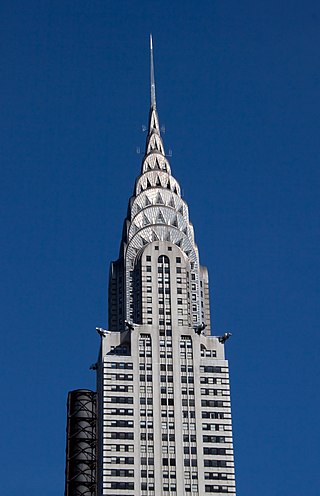
Art Deco, short for the French Arts décoratifs, is a style of visual arts, architecture, and product design, that first appeared in Paris in the 1910s, and flourished in the United States and Europe during the 1920s to early 1930s. Through styling and design of the exterior and interior of anything from large structures to small objects, including how people look, Art Deco has influenced bridges, buildings, ships, ocean liners, trains, cars, trucks, buses, furniture, and everyday objects including radios and vacuum cleaners.
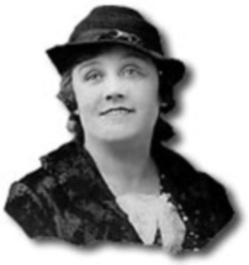
Clarice Cliff was an English ceramic artist and designer. Active from 1922 to 1963, Cliff became the head of the Newport Pottery factory creative department.
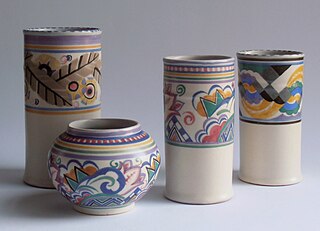
Poole Pottery is a British pottery brand owned by Denby Pottery Company, with the products made in Stoke on Trent, Staffordshire.

Charlotte Rhead was an English ceramics designer active in the 1920s and the 1930s in the Potteries area of Staffordshire.
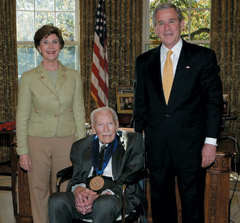
Viktor Schreckengost was an American industrial designer as well as a teacher, sculptor, and artist. His wide-ranging work included noted pottery designs, industrial design, bicycle design and seminal research on radar feedback. Schreckengost's peers included designers Raymond Loewy, Norman Bel Geddes, Eva Zeisel, and Russel Wright.

Frederick Hurten Rhead (1880–1942) was a ceramicist and a major figure in the Arts and Crafts movement. A native of England, he worked as a potter in the United States for most of his career. In addition to teaching pottery techniques, Rhead was highly influential in both studio and commercial pottery. He worked for the Roseville Pottery, established his own Rhead Pottery (1913–1917), and in 1935 designed the highly successful Fiesta ware for Homer Laughlin China Company.
The Overbeck sisters were American women potters and artists of the Arts and Crafts Movement who established Overbeck Pottery in their Cambridge City, Indiana, home in 1911 with the goal of producing original, high-quality, hand-wrought ceramics as their primary source of income. The sisters are best known for their fanciful figurines, their skill in matte glazes, and their stylized designs of plants and animals in the Art Nouveau and Art Deco styles. The women owned and handled all aspects of their artistic enterprise until 1955, when the last of the sisters died and the pottery closed. As a result of their efforts, the Overbecks managed to become economically independent and earned a modest living from the sales of their art.

Talavera pottery is a Mexican and Spanish pottery tradition from Talavera de la Reina, in Spain. In 2019, it was included in UNESCO's Representative List of the Intangible Cultural Heritage of Humanity.
The Cleveland School refers to the flourishing local arts community in Cleveland and Northeast Ohio during the period from 1910 to 1960. It was so named in 1928 by Elrick Davis, a journalist with the Cleveland Press. The Cleveland School was renowned for its watercolor painting, and also included well-known printmakers, sculptors, enamelists, and ceramists.
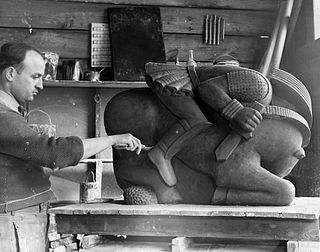
Waylande Desantis Gregory was one of the most innovative and prolific American art-deco ceramics sculptors of the early 20th century. His groundbreaking techniques enabled him to create monumental ceramic sculpture, such as the Fountain of the Atoms and Light Dispelling Darkness, which had hitherto not been possible. He also developed revolutionary glazing and processing methods, and was a seminal figure in the studio glass movement.

Art pottery is a term for pottery with artistic aspirations, made in relatively small quantities, mostly between about 1870 and 1930. Typically, sets of the usual tableware items are excluded from the term; instead the objects produced are mostly decorative vessels such as vases, jugs, bowls and the like which are sold singly. The term originated in the later 19th century, and is usually used only for pottery produced from that period onwards. It tends to be used for ceramics produced in factory conditions, but in relatively small quantities, using skilled workers, with at the least close supervision by a designer or some sort of artistic director. Studio pottery is a step up, supposed to be produced in even smaller quantities, with the hands-on participation of an artist-potter, who often performs all or most of the production stages. But the use of both terms can be elastic. Ceramic art is often a much wider term, covering all pottery that comes within the scope of art history, but "ceramic artist" is often used for hands-on artist potters in studio pottery.
Klytie Pate was an Australian studio potter who emerged as an innovator in the use of unusual glazes and the extensive incising, piercing and ornamentation of earthenware pottery. She was one of a small group of Melbourne art potters which included Marguerite Mahood and Reg Preston who were pioneers in the 1930s of ceramic art nationwide. Her early work was strongly influenced by her aunt, the artist and printmaker, Christian Waller.

Rookwood Pottery is an American ceramics company that was founded in 1880 and closed in 1967, before being revived in 2004. It was initially located in the Over-the-Rhine neighborhood in Cincinnati, Ohio, and has now returned there. In its heyday from about 1890 to the 1929 Crash, it was an important manufacturer, mostly of decorative American art pottery made in several fashionable styles and types of pieces.
Edris Eckhardt was an American artist associated with the Cleveland School. She is known for her work in Ceramic art and glass sculpture, her work with the Works Projects Administration's (WPA) Federal Arts Project of Cleveland, and her teaching.
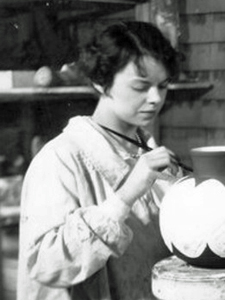
Thelma Frazier Winter (1903–1977) was an American enamelist, ceramic sculptor, and painter. She worked at Cowan Pottery and belonged to the Cleveland School of artists.

California Faience was a pottery studio in Berkeley, California in existence from 1915 to 1959. The pottery produced tiles, decorative vases, bowls, jars and trivets. The pottery was founded by William Victor Bragdon and Chauncey R. Thomas who also taught at the California School of Arts and Crafts in Oakland, California. The name refers to a pottery style and technique: faience.

Ceramic art is art made from ceramic materials, including clay. It may take varied forms, including artistic pottery, including tableware, tiles, figurines and other sculpture. As one of the plastic arts, ceramic art is a visual art. While some ceramics are considered fine art, such as pottery or sculpture, most are considered to be decorative, industrial or applied art objects. Ceramic art can be created by one person or by a group, in a pottery or a ceramic factory with a group designing and manufacturing the artware.

The New Yorker is the name given to Viktor Schreckengost's best-known piece—a large, parabolic, Egyptian blue punch bowl commissioned by Eleanor Roosevelt in 1931. According to Schreckengost, Mrs. Roosevelt was so impressed that she quickly ordered 2 more: one for Hyde Park and one for the White House. The large bowl was then put into production by the Cowan Pottery, where at least 11 unique designs were executed including a flared variety, less costly "Poor Man's Bowls" and matching plates—The Jazz Series. While the pieces gained much critical acclaim at the time, attention waned after the 1930s.

American art pottery refers to aesthetically distinctive hand-made ceramics in earthenware and stoneware from the period 1870-1950s. Ranging from tall vases to tiles, the work features original designs, simplified shapes, and experimental glazes and painting techniques. Stylistically, most of this work is affiliated with the modernizing Arts and Crafts (1880-1910), Art Nouveau (1890–1910), or Art Deco (1920s) movements, and also European art pottery.

Léon-Victor Solon, son of ceramist Marc-Louis Solon, was an English painter, ceramist, and graphic artist. He was a purveyor of the Art Nouveau and Art Deco styles and an important Modern Style figure.